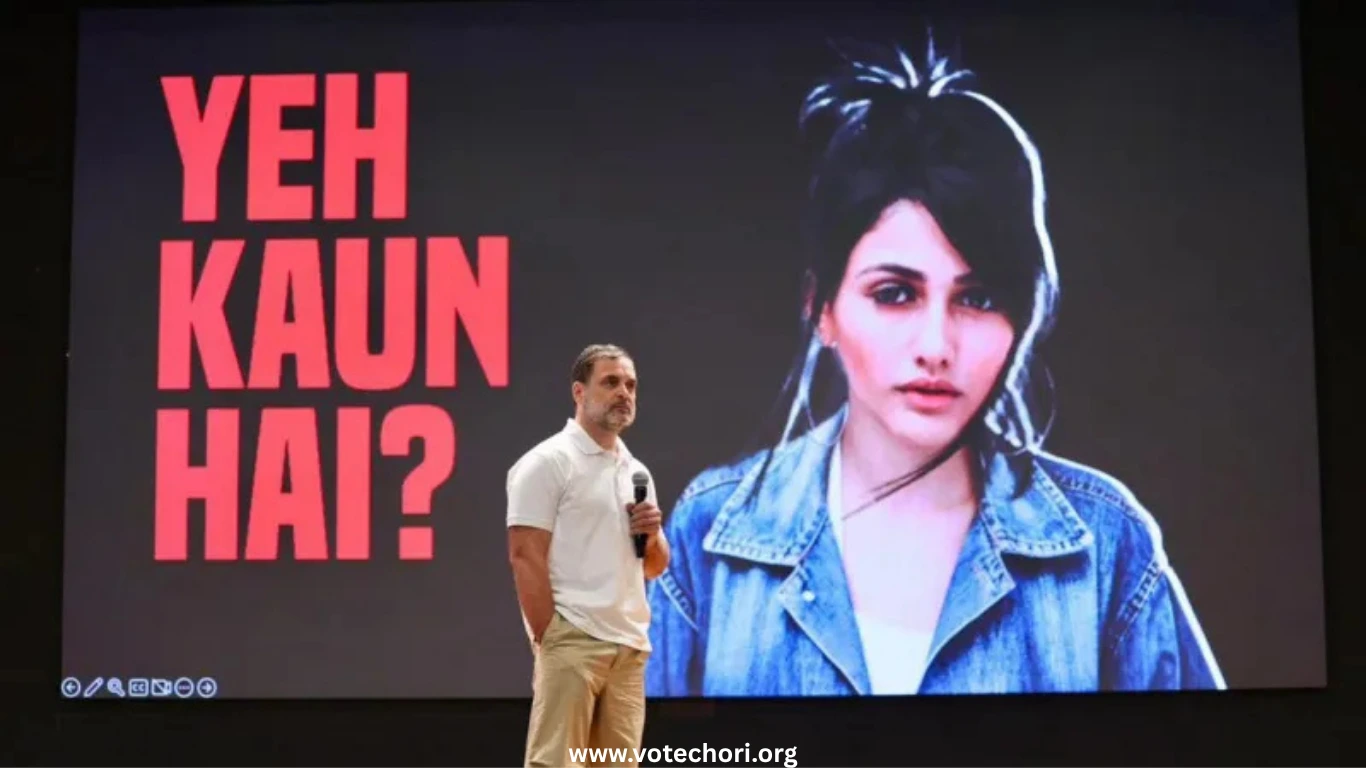
In a story that sounds stranger than fiction, a Brazilian woman has suddenly found herself at the center of India’s heated political storm over alleged voter fraud — all because of a single photo taken years ago.
What began as an ordinary photoshoot outside her home in Belo Horizonte, Brazil, in 2017, has now spiraled into a full-blown political controversy in India involving Congress leader Rahul Gandhi, the ruling BJP, and the Election Commission.
From Brazil to Haryana’s voter list
Larissa Nery, a 29-year-old hairdresser from Brazil’s Minas Gerais state, woke up this week to a flood of Instagram messages and mentions. At first, she thought it was a prank.
“People were tagging me in videos and sending me screenshots,” she told BBC. “I thought it was AI or some kind of joke — but then I realized it was real.”
Her face had appeared on a giant screen during a press conference in New Delhi, where Rahul Gandhi alleged massive “vote chori” (vote theft) during the Haryana state elections. Gandhi claimed his team had found 2.5 million fake voters on the electoral roll — and among them were multiple entries using Nery’s photograph.
“One woman’s photo is used 22 times in different booths,” Gandhi said, showing a slide featuring Nery’s image. “Who is this lady? How old is she? How can she vote 22 times in Haryana?”
The photo that started it all
The image, taken eight years ago by Brazilian photographer Matheus Ferrero, was part of a casual photo session he uploaded on the stock photo website Unsplash.
Neither Ferrero nor Nery could have imagined that years later, that same image would be repurposed — allegedly as a voter ID photo in India.
“When people from India started messaging me about it, I thought it was a scam,” Ferrero told the BBC. “Then it exploded after Rahul Gandhi’s press conference. I’ve had to make my accounts private.”
Political storm in India
Rahul Gandhi’s “vote chori” campaign has reignited the debate over India’s election transparency. He accused the BJP and the Election Commission of deliberately inflating voter lists with fake and duplicate entries to manipulate results in Haryana.
According to Gandhi, out of 20 million voters in the state, 2.5 million were irregular — including duplicates, invalid addresses, and fake entries.
The BJP has denied all allegations, calling them baseless and politically motivated.
Meanwhile, the Chief Electoral Officer of Haryana posted on X (formerly Twitter) that Gandhi had previously been asked to provide names of “ineligible voters” to verify his claims.
‘It’s scary,’ says Larissa
For Nery, who has never even visited India, the sudden media spotlight has been overwhelming.
“I got scared,” she said. “I didn’t go to work because journalists were calling my salon. Some people treated it like a meme, but it’s affecting my life and job.”
She has since removed her workplace details from social media and limited her online presence to avoid further harassment.
“This is far from my reality. I don’t even follow elections in Brazil, let alone another country,” she said.
Ferrero’s regret and disbelief
Photographer Matheus Ferrero, too, has expressed regret about how his work was misused.
“The photo was viewed millions of times on Unsplash. I never thought it could end up in a voter database,” he said. “Now I’ve deleted it. It feels invasive.”
A new twist in India’s ‘VoteChori’ campaign
As the controversy deepens, the case of a Brazilian woman unknowingly becoming the “face” of alleged voter fraud in India has added a bizarre global twist to the ongoing political feud.
For Rahul Gandhi, it has become a symbolic story — an image that captures his long-running claim that democracy is being “hacked.”
For Larissa Nery, it’s a nightmare she never signed up for.
“I still can’t believe it,” she says. “How did my face end up in India’s elections?”
